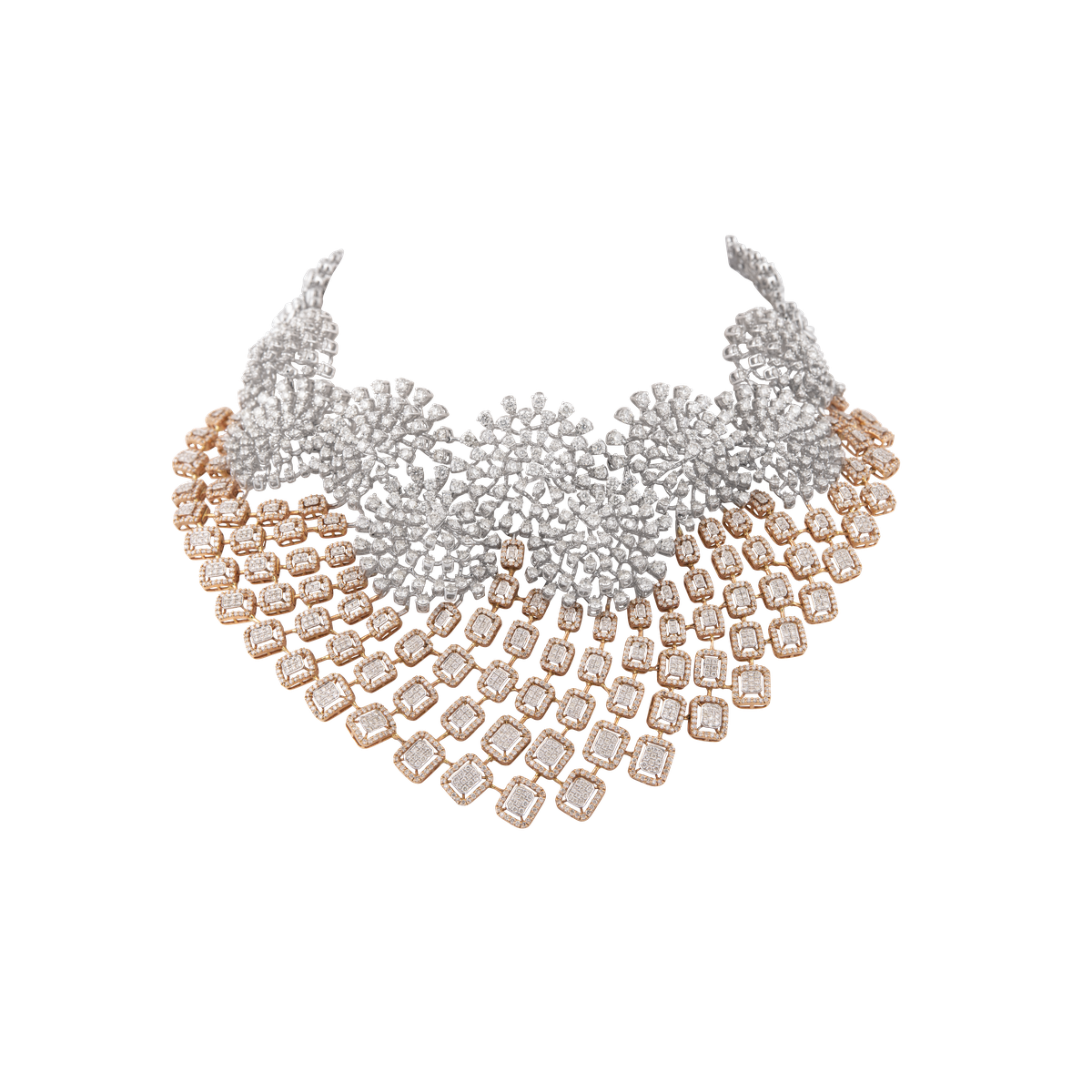Lab grown diamonds are cheaper and greener than natural diamonds, but despite major players expanding this segment, why haven’t they caught the attention of Indian buyers?
Lab grown diamonds are cheaper and greener than natural diamonds, but despite major players expanding this segment, why haven’t they caught the attention of Indian buyers?
Would you buy a lab grown diamond that costs a fraction of the price of a natural diamond? It is similar in appearance, chemically similar and is produced more sustainably than mined diamonds. Only, it’s not that rare.
Over the years, the ecological and economical allure of Laboratory Grown Diamonds (LGD) has attracted dazzling investments from leading jewelery brands across the globe. LVMH (Moet Hennessy Louis Vuitton), the parent company of luxury brands Bulgari, Tiffany & Co and Hublot, recently joined other investors in pumping US$90M into Lusix – an Israeli LGD manufacturer – in its diamond laboratories. Uses only solar energy.
Diamonds by Lightbox | photo credit: special arrangement
Interestingly, the De Beers Group, a global leading player in mined diamonds, was one of the first major brands to launch a complete jewelery line of LGDs called Lightbox in 2018 with an investment of US$100M. In addition, De Beers has set up its own diamond synthesis laboratory in Portland, which can produce 200,000 stones annually. One carat of LGD in a lightbox costs US$800 – about 60-80% less than a naturally mined diamond of the same weight!
Prefer ‘greenery’?
LGDs are cheaper and greener in color than natural diamonds. A report by the Diamond Producers Association and S&P Global states that the greenhouse gas footprint per one carat of polished natural diamond is 160 kg. Developed and polished LGD has a carbon footprint of only 8.17 kilograms of CO2e per carat, according to Pandora, a leading global jewelry brand, which recently announced it no longer uses mined diamonds.
Synthetic diamonds such as cubic zirconia, moissanite or crystals have existed for decades. “What differentiates LGDs from other types of synthetic diamonds is that they are grown by simulating the growth conditions of natural diamonds. Different levels of carbon, pressure, and temperature are applied to the diamond seed or diamond substrate to produce It can be developed into a desired type of diamond which is chemically, physically and optically identical to natural diamond”, Shashikant Dalichand Shah, Chairperson, Lab-Grown Diamond and Jewelery Promotion Council (LGDJPC).
A necklace at Fiona Diamonds | photo credit: special arrangement
Mined diamonds form naturally under the Earth’s surface over many years, while LGD can be formed in the laboratory over a period of only a few weeks through two processes: high pressure-high temperature (HPHT) or chemical vaporization. deposition (CVD). Shashikant explains, “LGD and natural diamonds are composed of pure carbon in the same crystalline form. An expert can differentiate between the two with the help of a hi-tech machine, but not with the naked eye.”
Natural vs. Synthetic Debate
Earlier this year, Titan Company (tanishq and caratlane.com) acquired its wholly owned subsidiary TCL North America, Inc. through an equity investment of US$20 million in Clean Origin, a US retailer of LGD and LGD Jewellery. Grow real diamonds? The answer is 100% yes!’ The website of Clean Origin states.
LGDs are currently regarded as a niche segment in the jewelery market and not as a direct competition to mined-natural diamonds. They are a great starting point for aspiring diamond jewellery, says Smit Patel, convener of the lab-grown diamond panel of the Gem and Jewelery Export Promotion Council (GJEPC). “According to estimates, the natural diamond pipeline is valued at around $80 billion in terms of diamond jewelery at the retail level”, he added. But, according to GJEPC data, LGD market share continues to grow and is expected to account for 10% (estimated 19.2 million carats) of the worldwide diamond market by 2030.

A creation by Kalyan Jewelers | photo credit: special arrangement
talking numbers
“We believe that diamonds are not only forever, but for everyone,” explains Mads Tomé-Madsen, vice president of global communications and sustainability at Pandora, which sells jewelery in more than 100 countries through 6,800 sales. “As an example, we see that many of our customers want to purchase a diamond ring to mark an important milestone in their lives, which will take diamonds beyond the classical engagement and wedding occasions”, he adds. .
“Lab-grown synthetic diamonds are flawless! Natural diamonds, on the other hand, will have some impurities—though it is invisible to the naked eye—that is the natural distinction that helps to identify them. This is why natural diamonds have a high intrinsic value.” considered, and remains in high demand,” says Ramesh Kalyanaraman, executive director, Kalyan Jewellers, adding that the two categories can “separately coexist, with the focus on wellness being “all natural, Certified Diamonds.”
Jewelry at Fiona Diamonds | photo credit: special arrangement
As of now, “very few Indian jewelers are retailing lab-grown diamonds,” Smit says, adding that most cut and polished LGDs are exported to the US. However, India is ramping up production and export of LGD.
“India produces three million thick LGDs per year,” says Shashikant Dalichand Shah of LGDJPC. India exported CVD lab-grown diamonds worth USD 1.3 billion in 2021-22. Parag Agarwal, CEO, Fiona Diamonds, which sells LGD directly to customers in India, says, “There is no problem in terms of LGD acceptance, but there is not enough awareness. “We cater mostly to professional, self-buying women who do not view jewelery as an investment,” she says.